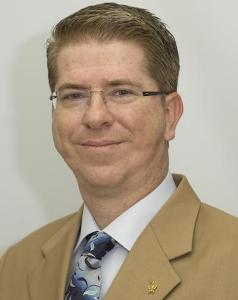Nov 24 2010
Tel Aviv -- Ferrography, a practice used by the American and Israeli air forces to monitor the condition of machinery, extracts tiny iron particles from lubricants such as oil and grease to analyze wear in machines.
Determining whether a system requires preventative maintenance can be the key to preventing catastrophic failure.
 This is professor Noam Eliaz of Tel Aviv University.
This is professor Noam Eliaz of Tel Aviv University.
Now Tel Aviv University scientists are exploring a modification of this technique for human analysis -- called "bio-ferrography" -- to diagnose diseases in their early stages, determine the efficacy of drugs, and ascertain the condition of orthopedic implants.
Prof. Noam Eliaz, head of Tel Aviv University's Materials and Nanotechnologies Program, says bio-ferrography has the potential to help develop better medications and better implants, and to diagnose the development of diseases, including cancer, at a very early stage. The research was recently published in a three-part series in the journal Acta Biomaterialia.
Wear of cartilage and bone
Osteoarthritis is characterized by damage to the cartilage in the joints. In severe cases, the cartilage is degraded to the point where bones rub together, which leads to pain and limited movement, says Prof. Eliaz. X-rays, the common diagnostic tool for osteoarthritis, are often insufficient to determine the precise level of the disease. But bio-ferrography can be used for early detection of the disease in a more objective and quantitative way, he explains.
To test the extent of damage to the joints, the researchers use a bio-ferrograph, an apparatus that allows magnetic isolation of target cells or tissues. They capture magnetically-labelled bone and cartilage particles from the synovial fluids extracted from patients' joints, count them, then analyze their chemical composition, shapes and dimensions. The number and dimensions of the wear particles can be correlated to the level of disease, while their chemical composition and shape can indicate from which histological layer of cartilage they originated.
The approach is objective, quantitative, selective and sensitive, allowing for the capture of nanometer-sized particles. "We have been able to detect wear particles even at an early stage of disease, when orthopedists could not identify any damage to the joint by X-ray imaging," explains Prof. Eliaz.
Assessing drugs and implants
The system can also be used to rank the effectiveness of medications in an objective and timely manner. For example, Prof. Eliaz and his team did a study on a common drug called Hyaluronan, which is applied to the knees of patients suffering from osteoarthritis in a series of four injections. Before each of four injections, the researchers collected joint fluids and analyzed the fragments of cartilage and bone to determine whether the medication was able to slow down or prevent cartilage deterioration.
Prof. Eliaz's bio-ferrograph showed a reduction in the concentrations of both cartilage and bone particles during treatment, with the best results appearing after two and three injections. After the fourth injection, however, the concentration of wear particles increased. This finding may eventually lead to the elimination of the fourth injection in the series, he says, reducing both the discomfort to the patient and the associated costs.
According to Prof. Eliaz, bio-ferrography has an additional application in the field of orthopedic implants. It can be used to predict the lifespan of artificial joints during the research and development stage, and later to monitor their degradation in the body and help physicians decide whether to replace them if a catastrophic failure looms.
"We can use this technology at the design stage to determine how new geometries, dimensions and materials affect the implant's functionality," says Prof. Eliaz. "Even after implantation, doctors can test synovial fluids to determine whether an implant is eroding, and at what rate."
Source: http://www.aftau.org/